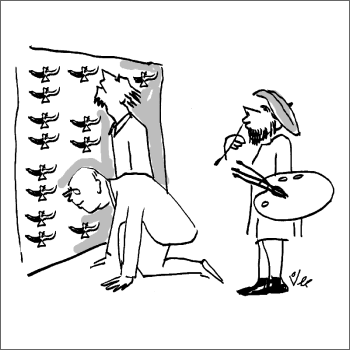Cloning Degrades Data
Cloning or copying objects into a digital image, from other parts of the same image or from a different image, is very questionable.

- Users are often tempted to use tools like Photoshop’s clone stamp tool to “clean up” a dirty preparation.
- The clone stamp tool takes a small sample of a region in an image, which is then applied over other regions of the same image or a different image. When the clone stamp tool is used by a skilled operator the changes to the image are often not visible by eye, although they can be seen with image processing.
- The rationale for using the clone stamp tool is usually to cover up imperfections in the image. If an image requires this much specialized processing, the best solution is to capture another image from the specimen, or from a new specimen prepared under the same conditions.
- Use of the clone stamp tool, or other retouching tools (e.g., the Adobe Photoshop Spot Healing Brush, Healing Brush, Patch, Dodge, Burn, Smudge and Sponge tools), is a form of selective image processing, and is inappropriate for scientific images.
- The use of cloning or copying techniques to specifically create objects in an image that did not exist there originally is research misconduct (falsification, fabrication).
- According to ORI investigator John Krueger, cloning and copying of data has frequently been used to falsify images. Because of the historical misuse of these tools, the undeclared use of cloning in a published image could lead to charges of research misconduct.
- Examples of misconduct would include copying gel bands into an existing gel image to create a new result, and/or any other image “seamlessly” created from the combination of portions of two or more images.
- In some instances the combination of two images into a single publication figure is appropriate.
- The figure needs to make it obvious to the editor, reviewers, and journal readers that the two parts came from separate images.
- A common example would be aligning lanes from two or more gels into one figure. Most journals require a line or small gap between the combined images to clearly show that they are from separate gels.
|

